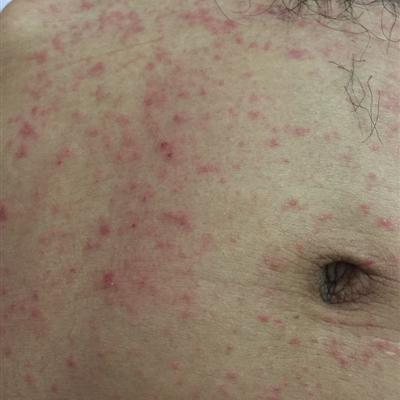Primary symptoms of giant cell infection?
summary
Cytomegalovirus (CMV) is a herpesvirus, which is widely distributed. CMV infection can cause urogenital system, central nervous system, liver, lung, blood circulation system lesions, and may be related to the occurrence of malignant tumors. Recently, it has been reported that AIDS may be related to CMV infection. It is often transmitted through sexual intercourse. Therefore, it is listed as a sexually transmitted disease. Primary symptoms of giant cell infection? Let's talk about it
Primary symptoms of giant cell infection?
Some children have obvious symptoms after birth, such as hepatosplenomegaly, persistent jaundice, skin ecchymosis, microcephaly, chorioretinitis, mental retardation and dyskinesia. Any of the above manifestations can exist alone, and can be accompanied by slow growth, irritability, sometimes fever, body temperature from slightly hot to 40 ℃. But because only a small number of children had clinical symptoms at birth, most of them could not be diagnosed.

If symptoms appear only a few months to years after birth, they may also show hearing loss, mild neurological symptoms and developmental disorders, which may affect learning. Children with congenital giant cell inclusion body disease can have various congenital malformations, including spasm, bilateral paralysis, epileptic convulsions, optic atrophy, deafness (a few children have deafness), and increased sensitivity to bacterial infection. Although some asymptomatic children with congenital CMV infection have normal physical development, they can still have congenital malformations and hearing impairment, but the incidence and severity are lower than those with symptoms.

This disease is a self limited disease, and its clinical manifestations are generally mild. Although most infants are subclinical infection, the incidence of its symptoms is still higher than that of adults. It is manifested as enlargement of liver, spleen and lymph nodes, rash, bronchitis or pneumonia, and hepatitis. Different from children with congenital infection, the nervous system is rarely invaded. Childhood infection is often acquired through the respiratory tract, often not dominant, but become a long-term carrier, occasionally with persistent hepatitis or interstitial pneumonia. This disease can also occur in children who have received fresh blood transfusion for many times, and its performance may be similar to infectious mononucleosis, but the heteroagglutination reaction of EB virus capsid antigen and IgM antibody are always negative, which can also cause hemolytic anemia or infectious peripheral neuritis. Most of the adolescents and adults with normal immune function had latent infection after infection, and occasionally had mononucleosis like manifestations (fever, rash, liver function damage, often no angina, negative for heteroagglutination test).

matters needing attention
1. Various antiviral agents such as ganciclovir, anti cytomegalovirus immunoglobulin, interferon and transfer factor can be used. 2. Propoxyguanosine can prevent CMV from spreading. If combined with high titer anti CMV immunoglobulin, it can reduce the mortality of CMV pneumonia complications after bone marrow transplantation. 3. Pay attention to the symptomatic treatment and nursing work, isolate the sick children, and disinfect their excrement.
















